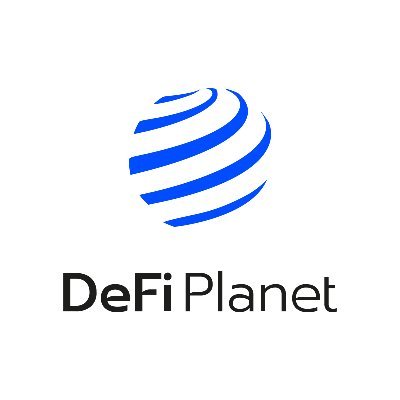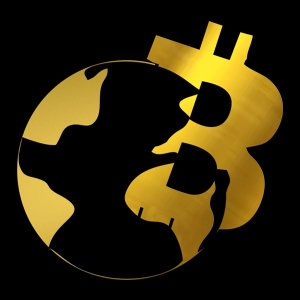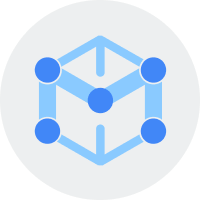Bitget: ¡En el Top 4 por volumen de trading diario global!
Cuota de mercado de BTC63.37%
Nuevos listados en Bitget : Pi Network
BTC/USDT$94950.15 (+1.33%)Índice de miedo y codicia54(Neutral)
Índice de la temporada de altcoins:0(Temporada de Bitcoin)
Monedas listadas en el pre-mercadoSIGNFlujo neto total de ETF en spot de Bitcoin +$380M (1d); +$3.14B (7d). Paquete de obsequios de bienvenida para nuevos usuarios por valor de 6.200 USDT.Reclamar ahora
Tradea en cualquier momento y lugar con la app de Bitget. Descargar ahora
Bitget: ¡En el Top 4 por volumen de trading diario global!
Cuota de mercado de BTC63.37%
Nuevos listados en Bitget : Pi Network
BTC/USDT$94950.15 (+1.33%)Índice de miedo y codicia54(Neutral)
Índice de la temporada de altcoins:0(Temporada de Bitcoin)
Monedas listadas en el pre-mercadoSIGNFlujo neto total de ETF en spot de Bitcoin +$380M (1d); +$3.14B (7d). Paquete de obsequios de bienvenida para nuevos usuarios por valor de 6.200 USDT.Reclamar ahora
Tradea en cualquier momento y lugar con la app de Bitget. Descargar ahora
Bitget: ¡En el Top 4 por volumen de trading diario global!
Cuota de mercado de BTC63.37%
Nuevos listados en Bitget : Pi Network
BTC/USDT$94950.15 (+1.33%)Índice de miedo y codicia54(Neutral)
Índice de la temporada de altcoins:0(Temporada de Bitcoin)
Monedas listadas en el pre-mercadoSIGNFlujo neto total de ETF en spot de Bitcoin +$380M (1d); +$3.14B (7d). Paquete de obsequios de bienvenida para nuevos usuarios por valor de 6.200 USDT.Reclamar ahora
Tradea en cualquier momento y lugar con la app de Bitget. Descargar ahora



Precio de Pencils ProtocolDAPP
Listada
Moneda de cotización:
EUR
€0.02584+25.00%1D
DAPP to EUR converter
DAPP
EUR
1 DAPP = 0.00 EUR
Bitget ofrece las comisiones por transacción más bajas entre las principales plataformas de trading. Cuanto más alto sea tu nivel VIP, más favorables serán las comisiones.
Gráfico de precios
TradingView
Market cap
Pencils Protocol price chart (DAPP/EUR)
Última actualización el 2025-04-28 23:08:21(UTC+0)
Capitalización de mercado:--
Capitalización de mercado totalmente diluida:--
Volumen (24h):--
Volumen en 24h/Capitalización de mercado:0.00%
Máximo 24h:€0.03057
Mínimo 24h:€0.01857
Máximo histórico:€1.84
Mínimo histórico:€0.01848
Suministro circulante:-- DAPP
Suministro total:
0DAPP
Tasa de circulación:0.00%
Suministro máx.:
--DAPP
Precio en BTC:0.{6}3110 BTC
Precio en ETH:0.{4}1637 ETH
Precio en la capitalización de mercado de BTC:
--
Precio en la capitalización de mercado de ETH:
--
Contratos:--
¿Qué opinas hoy de Pencils Protocol?
Nota: Esta información es solo de referencia.
AI analysis report on Pencils Protocol
Today's crypto market highlightsView report
Precio actual de Pencils Protocol en EUR
The live Pencils Protocol price today is €0.02584 EUR, with a current market cap of €0.00. The Pencils Protocol price is up by 25.00% in the last 24 hours, and the 24-hour trading volume is €0.00. The DAPP/EUR (Pencils Protocol to EUR) conversion rate is updated in real time.
Historial del precio de Pencils Protocol (EUR)
El precio de Pencils Protocol fluctuó un -50.83% en el último año. El precio más alto de DAPP en EUR en el último año fue de €1.84 y el precio más bajo de DAPP en EUR en el último año fue de €0.01848.
FechaCambio en el precio (%) Precio más bajo
Precio más bajo Precio más alto
Precio más alto 
 Precio más bajo
Precio más bajo Precio más alto
Precio más alto 
24h+25.00%€0.01857€0.03057
7d+23.43%€0.01857€0.03057
30d-51.24%€0.01848€0.06104
90d-65.05%€0.01848€0.3763
1y-50.83%€0.01848€1.84
Histórico-50.83%€0.01848(--, Hoy )€1.84(--, Hoy )
¿Cuál es el precio más alto de Pencils Protocol?
The all-time high (ATH) price of Pencils Protocol in EUR was €1.84, recorded on . Compared to the Pencils Protocol ATH, the current price of Pencils Protocol is down by 98.60%.
¿Cuál es el precio más bajo de Pencils Protocol?
The all-time low (ATL) price of Pencils Protocol in EUR was €0.01848, recorded on . Compared to the Pencils Protocol ATL, the current price of Pencils Protocol is up by 39.81%.
Predicción de precios de Pencils Protocol
¿Cuál será el precio de DAPP en 2026?
Según el modelo de predicción del rendimiento histórico del precio de DAPP, se prevé que el precio de DAPP alcance los €0.01421 en 2026.
¿Cuál será el precio de DAPP en 2031?
En 2031, se espera que el precio de DAPP aumente en un +41.00%. Al final de 2031, se prevé que el precio de DAPP alcance los €0.03854, con un ROI acumulado de +49.16%.
Preguntas frecuentes
¿Cuál es el precio actual de Pencils Protocol?
El precio en tiempo real de Pencils Protocol es €0.03 por (DAPP/EUR) con una capitalización de mercado actual de €0 EUR. El valor de Pencils Protocol sufre fluctuaciones frecuentes debido a la actividad continua 24/7 en el mercado cripto. El precio actual de Pencils Protocol en tiempo real y sus datos históricos están disponibles en Bitget.
¿Cuál es el volumen de trading de 24 horas de Pencils Protocol?
En las últimas 24 horas, el volumen de trading de Pencils Protocol es de €0.00.
¿Cuál es el máximo histórico de Pencils Protocol?
El máximo histórico de Pencils Protocol es €1.84. Este máximo histórico es el precio más alto de Pencils Protocol desde su lanzamiento.
¿Puedo comprar Pencils Protocol en Bitget?
Sí, Pencils Protocol está disponible actualmente en el exchange centralizado de Bitget. Para obtener instrucciones más detalladas, consulta nuestra útil guía Cómo comprar pencils-protocol .
¿Puedo obtener un ingreso estable invirtiendo en Pencils Protocol?
Desde luego, Bitget ofrece un plataforma de trading estratégico, con bots de trading inteligentes para automatizar tus trades y obtener ganancias.
¿Dónde puedo comprar Pencils Protocol con la comisión más baja?
Nos complace anunciar que plataforma de trading estratégico ahora está disponible en el exchange de Bitget. Bitget ofrece comisiones de trading y profundidad líderes en la industria para garantizar inversiones rentables para los traders.
Pencils Protocol news
Holdings por concentración de Pencils Protocol
Ballenas
Inversores
Minoristas
Pencils Protocol direcciones por tiempo en holding
Holders
Cruisers
Traders
Gráfico de precios de coinInfo.name (12) en tiempo real

Precios mundiales de Pencils Protocol
How much is Pencils Protocol worth right now in other currencies? Last updated: 2025-04-28 23:08:21(UTC+0)
DAPP a MXN
Mexican Peso
Mex$0.58DAPP a GTQGuatemalan Quetzal
Q0.23DAPP a CLPChilean Peso
CLP$27.74DAPP a HNLHonduran Lempira
L0.76DAPP a UGXUgandan Shilling
Sh108.22DAPP a ZARSouth African Rand
R0.55DAPP a TNDTunisian Dinar
د.ت0.09DAPP a IQDIraqi Dinar
ع.د38.65DAPP a TWDNew Taiwan Dollar
NT$0.96DAPP a RSDSerbian Dinar
дин.3.05DAPP a DOPDominican Peso
RD$1.75DAPP a MYRMalaysian Ringgit
RM0.13DAPP a GELGeorgian Lari
₾0.08DAPP a UYUUruguayan Peso
$1.24DAPP a MADMoroccan Dirham
د.م.0.27DAPP a AZNAzerbaijani Manat
₼0.05DAPP a OMROmani Rial
ر.ع.0.01DAPP a SEKSwedish Krona
kr0.28DAPP a KESKenyan Shilling
Sh3.81DAPP a UAHUkrainian Hryvnia
₴1.23- 1
- 2
- 3
- 4
- 5
Cómo comprar Pencils Protocol(DAPP)

Crea tu cuenta gratuita en Bitget
Regístrate en Bitget con tu dirección de correo electrónico/número de teléfono móvil y crea una contraseña segura para proteger tu cuenta.

Verifica tu cuenta
Verifica tu identidad ingresando tu información personal y cargando una identificación válida con foto.

Convierte Pencils Protocol a DAPP
Elige qué criptomonedas tradear en Bitget.
Más informaciónTradea futuros perpetuos de DAPP
Después de registrarte en Bitget y comprar tokens de USDT o DAPP exitosamente, puedes empezar a hacer trading con derivados, incluidos futuros de DAPP y trading con margen para aumentar tus ingresos.
El precio actual de DAPP es de €0.02584, con un cambio en el precio en 24 horas del +25.00%. Los traders pueden obtener ganancias yendo en long o en short en futuros de DAPP.
Únete al copy trading de DAPP siguiendo a traders elite.
Después de registrarte en Bitget y comprar tokens de USDT o DAPP exitosamente, también puedes empezar a hacer copy trading siguiendo a traders elite.
Nuevos listados en Bitget
Nuevos listados
Comprar más
¿Dónde puedo comprar Pencils Protocol (DAPP)?
Compra cripto en la app de Bitget
Regístrate en cuestión de minutos para comprar criptomonedas con tarjeta de crédito o transferencia bancaria.
Sección de video: verificación rápida, trading rápido

Cómo completar la verificación de identidad en Bitget y protegerte del fraude
1. Inicia sesión en tu cuenta de Bitget.
2. Si eres nuevo en Bitget, mira nuestro tutorial sobre cómo crear una cuenta.
3. Pasa el cursor por encima del ícono de tu perfil, haz clic en "No verificado" y haz clic en "Verificar".
4. Elige tu país o región emisora y el tipo de ID, y sigue las instrucciones.
5. Selecciona "Verificación por teléfono" o "PC" según tus preferencias.
6. Ingresa tus datos, envía una copia de tu ID y tómate una selfie.
7. Envía tu solicitud, ¡y listo! Habrás completado la verificación de identidad.
Las inversiones en criptomoneda, lo que incluye la compra de Pencils Protocol en línea a través de Bitget, están sujetas al riesgo de mercado. Bitget te ofrece formas fáciles y convenientes de comprar Pencils Protocol, y hacemos todo lo posible por informar exhaustivamente a nuestros usuarios sobre cada criptomoneda que ofrecemos en el exchange. No obstante, no somos responsables de los resultados que puedan surgir de tu compra de Pencils Protocol. Ni esta página ni ninguna parte de la información que incluye deben considerarse respaldos de ninguna criptomoneda en particular.
DAPP to EUR converter
DAPP
EUR
1 DAPP = 0.02584 EUR
Bitget ofrece las comisiones por transacción más bajas entre las principales plataformas de trading. Cuanto más alto sea tu nivel VIP, más favorables serán las comisiones.
Recursos de DAPP
Clasificación de Pencils Protocol
Clasificaciones promedio de la comunidad
4.4
Este contenido solo tiene fines informativos.
Bitget Insights

DeFi Planet
10h
@WalletConnect
🔹 Pro: Connects wallets to dApps securely across devices.
🔹 Con: Occasional connection drops in busy networks.
Impact:
Mobile-first Web3 experience made seamless critical for dApp adoption.
MOBILE-2.33%

Bitcoin_World
12h
Ethereum Fee Structure: Unlocking Fairer Fees and dApp Revenue Potential
The world of decentralized finance (DeFi) and Web3 applications on the Ethereum network is constantly evolving. One of the persistent challenges has been finding the right balance between ensuring the network remains sustainable and secure through fees, while also making it affordable for users and profitable for the developers building innovative applications. High Ethereum gas fees have often been a barrier to entry and usage. Now, a new conversation is emerging about potentially rethinking the very core of how fees are handled on the network.
A significant development in this ongoing discussion is a recent proposal put forth by Kevin Owocki, founder of Gitcoin, and Devansh Mehta. Reported by Cointelegraph on April 27, this EIP proposal aims to introduce a dynamic structure designed explicitly to address the tension between generating revenue for application builders and extracting fair fees from users. It’s a fascinating concept that could reshape the economic landscape for decentralized applications (dApps) and the broader Ethereum network.
At its heart, the proposal suggests moving towards a fee model that is not just based on network congestion (like the current EIP-1559 model primarily is) but also takes into account the success or funding level of the project being used. The core mechanism mentioned is a dynamic structure that would use a square root formula.
Think of it this way: instead of a flat percentage or a fee purely dictated by network demand, the fee percentage extracted from a transaction or interaction with a dApp would be inversely related to the project’s funding or revenue, albeit in a non-linear way determined by the square root. As a project’s funding increases, the percentage of the transaction value or related metric taken as a fee would gradually decrease. This sounds counter-intuitive initially, but the goal is to allow smaller, newer projects to keep a larger share of potential protocol revenue, while larger, more established projects contribute relatively more in absolute terms, even if the percentage is lower.
The precise details of how “project funding” or revenue would be measured on-chain are crucial and would need robust mechanisms, potentially involving oracle networks or standardized reporting methods. The proposal is still in its early stages, but the core idea is to create a fee mechanism that is more aligned with the economic reality of the applications running on Ethereum, rather than just the underlying network’s operational costs and demand.
The current Ethereum fee structure, significantly improved by EIP-1559 (which introduced base fees and burning), has made fees more predictable but hasn’t solved the issue of high costs during peak network usage. Furthermore, it doesn’t inherently provide a built-in mechanism for dApps to generate protocol-level revenue simply from being used. Developers often rely on tokenomics, transaction fees *within* the dApp’s logic (separate from gas fees), or other business models.
This proposal stems from the recognition that a healthy ecosystem needs both a robust base layer (Ethereum) and thriving applications built on top. If dApps struggle to find sustainable revenue models, innovation can be stifled. If blockchain fees are prohibitively high, users are priced out. The proposal attempts to bridge this gap by creating a system where using a successful dApp directly contributes revenue back to the dApp creators, while also contributing to the network, all through a transparent, protocol-defined fee.
Key issues the proposal aims to address include:
One of the most compelling aspects of this EIP proposal is its direct focus on enabling and boosting dApp revenue. Unlike traditional gas fees which primarily compensate validators and contribute to ETH burning, this proposed structure envisions a portion of the fee being directed back to the dApp itself. This could be a game-changer for developers.
Imagine a popular DeFi protocol or an NFT marketplace. Under the current system, they earn revenue through trading fees, listing fees, or other application-specific charges defined within their smart contracts. Gas fees are an external cost paid by the user to the network. With this new proposal, a percentage of the transaction value or activity could be automatically split, with one part going to the network (potentially for burning or validator tips) and another part going directly to the dApp’s treasury or a designated address. This creates a direct, protocol-supported revenue stream tied to usage.
This could significantly impact the viability of open-source or public goods dApps that struggle with monetization. By baking revenue extraction into the protocol layer itself, it provides a more reliable and transparent funding mechanism, potentially reducing reliance on grants, donations, or complex tokenomics designed purely for revenue generation.
How might this new structure affect the overall blockchain fees users pay? This is a critical question. The proposal aims for “fair fee extraction,” which suggests the intention is not necessarily to increase the total cost for users across the board, but rather to distribute where those fees go and how they are calculated based on context.
The square root formula is key here. A square root function grows, but at a decreasing rate. For example, the square root of 100 is 10, but the square root of 1000 is about 31.6. If this were applied to a fee percentage (e.g., fee % = constant * sqrt(funding)), the fee percentage would increase as funding increases, but the *rate* of increase slows down significantly for larger projects. Conversely, if the formula is designed to *lower* the percentage as funding increases (as the Cointelegraph report suggests), the percentage drop would be steeper for initial increases in funding and flatten out for very large projects.
Let’s consider a simplified hypothetical using the idea that the percentage *decreases* as funding *increases* via a square root relationship (note: the exact formula and its application are subject to the proposal’s details):
(Note: This table is purely illustrative based on one possible interpretation of a square root relationship for decreasing fees with increasing funding. The actual formula and parameters in the proposal would determine the precise impact).
This model suggests that using very successful, high-funded dApps might result in a lower percentage fee compared to smaller ones, potentially making interactions with popular protocols more affordable in percentage terms, though the absolute value might still be significant on large transactions. Conversely, it allows smaller projects to potentially earn a higher percentage on their initial usage, helping them bootstrap revenue.
The total fee paid by the user would likely be a combination of this new dynamic dApp fee and the existing base fee mechanism from EIP-1559, plus validator tips. The proposal would need to clearly define how these layers interact to ensure fees remain predictable and manageable for users.
Any significant change to the Ethereum network, especially one involving core economics like fees, must go through the rigorous Ethereum Improvement Proposal (EIP) process. This proposal by Owocki and Mehta is just the beginning of a long journey.
The typical EIP lifecycle involves several stages:
This specific proposal is currently in the very early “Draft” or discussion stage. It needs widespread community discussion, analysis by cryptoeconomic researchers, and consideration by core development teams. There will undoubtedly be many questions and potential criticisms regarding the practical implementation, security implications, and fairness of measuring and tying fees to project funding.
Following the progress of this EIP proposal involves monitoring the Ethereum Magicians forum, developer calls, and community discussions on platforms like Twitter and Discord. It’s a transparent process, allowing anyone interested to observe and contribute feedback.
If a version of this dynamic fee structure were ever implemented, it could have profound implications for the future of the Ethereum network and its ecosystem. It signals a potential shift in thinking about protocol design – moving beyond just being a neutral transaction layer to one that actively facilitates and supports the economic models of the applications it hosts.
Potential positive outcomes include a more vibrant dApp ecosystem with clearer paths to sustainability, potentially leading to more innovation and better user experiences as developers have reliable revenue streams. It could also make Ethereum a more attractive platform for builders compared to other blockchains that might lack such built-in developer monetization features.
However, the challenges are significant. The mechanism for measuring “funding” or “revenue” must be secure, decentralized, and resistant to manipulation. The formula must be carefully calibrated to avoid unintended consequences, such as creating excessive complexity or new avenues for rent-seeking. The interaction with existing fee mechanisms (like EIP-1559) needs thorough analysis.
This proposal is a bold idea that sparks important conversations about the economic design space of decentralized protocols. It highlights the ongoing effort within the Ethereum community to evolve and adapt to the needs of its growing ecosystem, seeking innovative ways to balance the interests of all participants – users, developers, and the network itself.
The proposal by Kevin Owocki and Devansh Mehta for a dynamic Ethereum fee structure represents an exciting potential evolution in how value flows within the network. By suggesting a mechanism that ties fee extraction to project funding using a square root formula, it directly tackles the challenge of balancing sustainable dApp revenue with the need for fair and accessible blockchain fees.
While still in its nascent stages as an EIP proposal, the idea prompts crucial discussions about protocol economics, developer incentives, and user experience on the Ethereum network. Its potential benefits – fostering dApp sustainability and potentially creating a fairer fee landscape – are significant. However, the practical hurdles related to implementation, measurement, and potential unintended consequences require careful consideration and robust debate from the community.
This proposal is a testament to the continuous innovation happening within Ethereum. Whether this specific model is adopted or not, the conversation it has started is invaluable, pushing the ecosystem to think creatively about building a more balanced, sustainable, and prosperous future for decentralized applications and their users.
To learn more about the latest Ethereum network trends, explore our article on key developments shaping Ethereum price action.
Disclaimer: The information provided is not trading advice, Bitcoinworld.co.in holds no liability for any investments made based on the information provided on this page. We strongly recommend independent research and/or consultation with a qualified professional before making any investment decisions.
ETH+0.51%
CORE+5.77%

Bpay-News
17h
Ethereum Foundation Executive Director Clarifies: Pectra Upgrade Has Nothing to Do with the Controversial EOF, the Former Will Be Released on Schedule
Tomasz K. Stańczak, executive director of the Ethereum Foundation, released an important clarification on the EOF debate, saying that there is a major controversy over EOF, but there is a key misunderstanding that needs to be clearly resolved: the current EOF discussion has nothing to do with the upcoming Pectra upgrade on May 7. The Pectra upgrade does not include EOF and is not intended to include EOF. All content of Pectra will be released as planned on May 7. CoinDesk previously reported that the Ethereum "EVM Object Format (EOF)" improvement proposal has been included in the Pectra hard fork, which is expected to be executed later this year or early next year. The EOF proposal will make a series of minor changes to upgrade the Ethereum Virtual Machine (EVM). EOF will make smart contracts more developer-friendly, especially for those who use the Solidity or Vyper programming languages to build decentralized applications, but may break existing smart contracts. Developers have added a new version that allows DApp builders to choose which version of EVM to use when deploying code.
MAJOR+2.29%
VIRTUAL+31.23%

Crypto Wolf Trades_
1d
$TRISIG holding & adding more as its looking extremely bullish 🔥🔥
$SOCIAL Buy & hold as it will start firing hard anytime soon ⏳⏳🚀🚀
Dont miss if you missed $IGU 60% -
$DAPP 60% - $CROS 40-80% $ISP 80%😎
$kos $pbux $form $bmt $epx $vr $jst $phil $obi $vib $bmt #btc
BTC+1.31%
CROS+11.24%

Crypto News Flash
1d
Pi Network Officially Approves Fruity Pi DApp for Game Lovers
Pi Network has now revealed the approval of a new decentralized application (dApp) called Fruity Pi . Created by Canadian gaming firm Article 19 Group, which has worked with giants such Disney and Nintendo, Fruity Pi adds an uplifting moment to the Pi Network environment.
This game allows users to play while using Pi tokens directly to make transactions within the application. This approval is also marked by the provision of a purple check mark, indicating that Fruity Pi has been officially verified in the network.
As the Consensus 2025 summit in Toronto approaches, the Pi Core Team is making progress within the Pi Ecosystem. A recently added DApp, Fruity Pi, has now been approved by the PCT with a purple check mark. It is also expected that the PCT will accelerate the deployment and… pic.twitter.com/KUjzxhUvdb
— Dr Altcoin (@Dr_Picoin) April 24, 2025
Fruity Pi offers a simple yet interesting concept: players match fruits to get prizes. On the other hand, what makes it different is the full integration with the Pi wallet, so users can use their tokens to buy items or access premium features.
Furthermore, this step is considered a concrete effort in developing the utility of Pi Coin, which previously relied more on hope. Just imagine if in the past using tokens was only limited to claims, now it can be used directly in real games.
Meanwhile, CNF previously reported that Pi Network had announced the long-awaited mainnet migration roadmap for the community. However, the announcement received mixed reactions, due to the lack of details regarding the implementation schedule or other updates such as a decentralized exchange.
This disappointment seemed to be somewhat alleviated by the presence of Fruity Pi and other breakthroughs designed to accelerate the ecosystem.
On April 22, 2025, crypto analysts noted striking activity from whales who withdrew around 41 million Pi Coins from exchanges within 48 hours. Not only that, this step was said to be an accumulation signal that could push the price of Pi towards $5. Strong support at the $0.60 level and increasing utility, such as through Fruity Pi, are considered major factors in this optimistic projection.
Furthermore, the day before the announcement of Fruity Pi, Pi Network also confirmed their presence as one of the sponsors at the prestigious Consensus 2025 event, which will be held at the Metro Toronto Convention Centre in mid-May. This emphasizes the project’s ambition to expand its global reach.
In addition, CNF also reported earlier that Pi Network has launched Pi Ad Network, opening up new monetization opportunities for developers through in-app advertising, with the requirement that advertisers purchase and use Pi.
Meanwhile, as of press time, Pi Coin is swapped hands at about $0.6533, slightly down 0.13% over the last 24 hours.
UP-4.35%
CORE+5.77%
Activos relacionados
Criptomonedas populares
Una selección de las 8 criptomonedas principales por capitalización de mercado.
Agregada recientemente
Las criptomonedas agregadas más recientemente.
Capitalización de mercado comparable
Entre todos los activos de Bitget, estos 8 son los más cercanos a Pencils Protocol en capitalización de mercado.
Additional info on Pencils Protocol
Resumen de la moneda
Relacionado con la moneda
Relacionado con el trading
Actualizaciones de la moneda

































